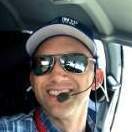Keep Your Speed Up
-
Members Online
- varlajo
- DCarlton
- NickG
- Marcopolo
- donkaye
- Medicpilot
- shawnd
- Air pirate
- Hank
- ericrynehess
- Igor_U
- Scottknoll
- Blaze
- Coachella Bravo
- Thedude
- acekng1
- fehek28092
- 1980Mooney
- redbaron1982
- Patrick Horan
- philiplane
- Vulcan81
- 201Mooniac
- EricJ
- Philthe123
- Aerodon
- mluvara
- Stubby
- jeremyc209
- clh
- Crawfish
- UteM20F
- Matthew P
- Steven B
- PatrickM
- suzortman
- Mooney810
- PeteMc
- Wingover
- Gary Bymers
- dkkim73
- daytonabch04
- ProtoFly
- ohdub
- Nico1
- Kirch56H
- gamefreak32
- Ron McBride
- BobbyH
- Dieselman1220
- Danb
- dzeleski


Recommended Posts
Join the conversation
You can post now and register later. If you have an account, sign in now to post with your account.